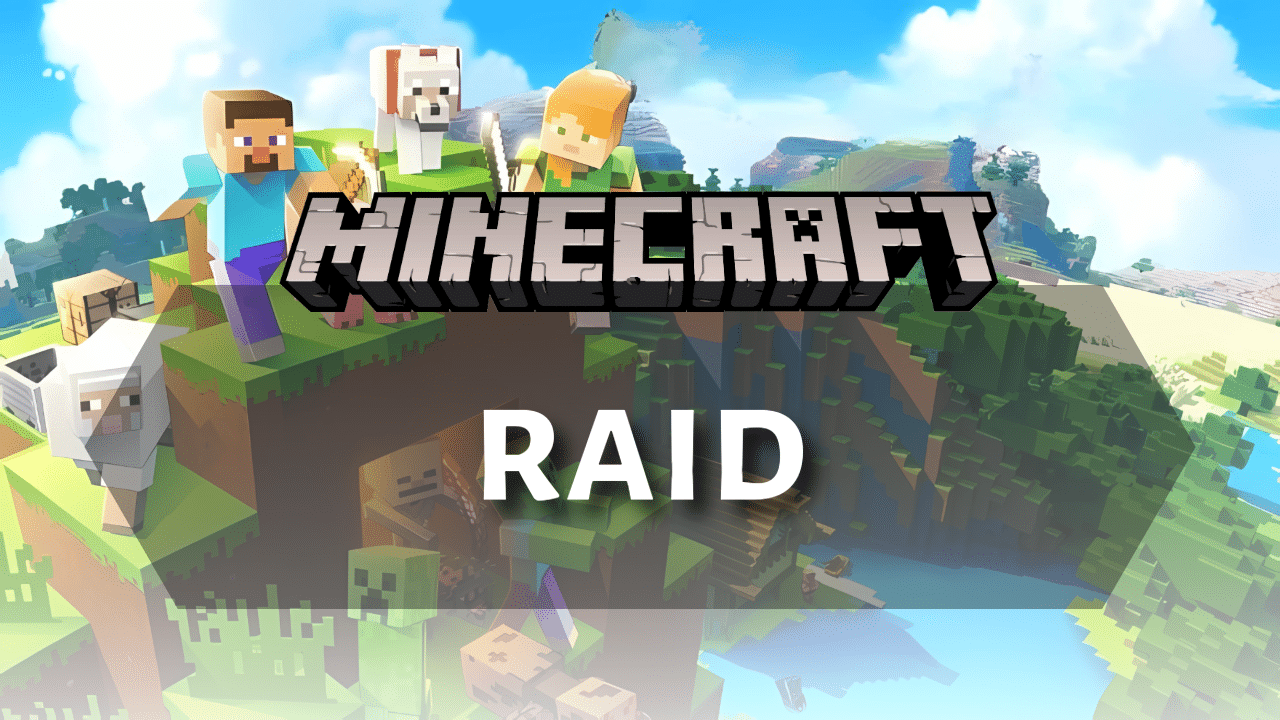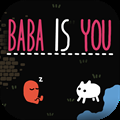
Introduction
Pillager raids are challenging in-game events in Minecraft where waves of hostile illager mobs attack a village, attempting to kill the villagers. These raids can be a significant threat to unprepared players and their villager communities. Understanding how the raid works—how it starts, how many waves to expect, and how best to defend against it—is crucial for anyone looking to protect their villages and reap the rewards that come with victory. This Minecraft Bedrock Raid Guide will cover all topics you’ll need when taking on the raid.
Starting a Pillager Raid
To initiate a pillager raid in Minecraft Bedrock Edition, a player must first acquire the Bad Omen status effect. This effect is obtained by killing a pillager captain, a unique pillager mob that carries a dark grey banner. Pillager captains can be found in pillager patrols that occasionally spawn around the player and within pillager outposts. These outposts are structures that naturally generate near villages. Upon defeating a pillager captain, they drop an ominous bottle. Consuming it grants the player the Bad Omen effect. When a player with this effect enters a village—defined as an area with at least one villager and a claimed bed—the effect becomes Raid Omen. After 30 seconds, a raid will begin.
Understanding Raid Mechanics in Bedrock Edition
In Minecraft Bedrock Edition, raids are complex multi-wave battles triggered when a player with the Bad Omen status effect enters a village. Once a raid is activated, a distinctive red raid bar appears at the top of the screen. This bar acts as a wave tracker and gradually empties as the player defeats each illager mob in the current wave. When the bar is completely cleared, the game begins the next wave—unless it was the final one, in which case the raid ends.
The number of waves a raid has is directly tied to the game’s difficulty setting. On Easy, players face 3 waves of attackers. On Normal, the number increases to 5 waves, and on Hard, the raid is at its most dangerous with 7 waves. Each new wave becomes progressively more difficult, introducing stronger or more numerous enemies and sometimes entirely new mob types.
The composition of each wave varies by difficulty and wave number, but certain illager mobs are guaranteed to appear at specific stages. Pillagers are almost always present and form the base of the illager army. They attack from range with crossbows and are most numerous in the early waves. As the raid progresses, vindicators begin to appear, introducing a melee threat with their high-damage axe attacks. On higher difficulties and in later waves, ravagers join the battle. These massive beast-like mobs can trample players, villagers, and even destroy some blocks like crops, snow layers, and leaves.
Some ravagers carry pillagers or vindicators on their backs, combining brute force with ranged or melee attacks. From the third wave onward, witches may spawn. They act as support units, healing fellow illagers and throwing harmful potions at players and iron golems. In the final waves on Normal and Hard, evokers begin to appear. These dangerous spellcasters summon vexes and evocation fangs, making them a serious threat due to their ranged magic attacks and ability to swarm the battlefield with summoned mobs.
One key mechanical difference between Java Edition and Bedrock Edition is how the Bad Omen effect functions. In Java, killing multiple raid captains stacks the Bad Omen effect up to level 5, increasing the difficulty and size of the raid. In Bedrock Edition, however, Bad Omen does not stack. Whether a player has level I or level V (or any level at all), the raid size and difficulty are entirely based on the global game difficulty setting. Killing additional captains does not add extra waves or tougher enemies. This means that in Bedrock, raids are consistent and predictable once you know the difficulty level you’re playing on.
Raids end in one of two ways: victory or defeat. If all villagers in the affected village are killed, the raid ends in failure, and the player does not receive any rewards. This can happen quickly if villagers are unprotected, houses are open, or there are no iron golems or player defenses in place. On the other hand, if the player defeats every illager in every wave, the raid ends in victory. The victory is marked by celebratory fireworks in the village, and the player is granted the Hero of the Village effect, a powerful temporary status that improves trading prices and encourages villagers to offer gifts.
The pacing of raids is designed to keep players on edge. There is a short cooldown between waves, allowing the player to recover slightly, relocate, or re-equip. During this time, the raid bar remains on screen but will refill once the next wave spawns. Illagers spawn at the edge of the village, often at random or in multiple directions, making it essential for players to patrol and maintain visual coverage of the entire area.
Raids do not pause for nighttime or bad weather, so they can become even more dangerous if hostile overworld mobs like skeletons or zombies appear alongside the illagers. While you can technically sleep in a bed during a raid if you find a safe area, this does not end or pause the raid itself. Players must manage both the illager attack and environmental threats if caught unprepared.
Understanding the mechanics of raids in Bedrock Edition is critical for designing defensive structures, protecting villagers, and ensuring that the village survives. With the right preparation and strategy, players can not only survive these intense assaults but also benefit greatly from the rewards that follow.
Mobs in the Raid
Pillagers are the standard soldiers found in raids. They wield crossbows and attack from a distance, firing every 3 seconds at targets within an 8-block radius. They will celebrate if they successfully kill a villager during a raid. In Bedrock Edition, pillagers are more common in the earlier waves and can occasionally appear riding ravagers. Upon death, they may drop a crossbow, 0–2 arrows, and if they are a raid captain, an ominous banner. In Bedrock Edition, pillagers can also drop bonus loot such as emeralds, enchanted books, iron tools, and iron armor.
Vindicators are melee-focused illagers armed with iron axes. Their attacks are powerful and can disable shields for 5 seconds. They aggressively chase down players and will attempt to open or break wooden doors on normal and hard difficulties to reach villagers. Vindicators may also act as raid captains and usually appear alongside pillagers. Upon death, they can drop emeralds and their iron axes. In Bedrock Edition, they have a chance to drop additional loot similar to pillagers. In the seventh wave of a Bedrock Edition raid, one ravager is ridden by a pillager rather than a vindicator.
Witches serve as the support units during raids, throwing regeneration and swiftness potions to heal and buff fellow illagers. They are hostile toward players and iron golems, using poison and slowness potions in combat. Although they don’t target villagers directly, their splash potions can accidentally harm them. Witches begin to appear in raids starting from wave 3. When defeated, they may drop items like glass bottles, glowstone dust, redstone dust, spider eyes, gunpowder, sugar, and the potion they were drinking at the time.
Evokers are rare and powerful spell-casting illagers. They attack by summoning evocation fangs from the ground and hostile flying mobs called vexes. Evokers move quickly, making them harder to hit, and try to get within range to summon vexes. They may also serve as raid captains and typically appear in the later raid waves. When killed, evokers drop a totem of undying.
Ravagers are massive, bull-like mobs that charge at enemies and deal heavy damage. They have high health and can roar to knock back opponents using shields. Ravagers can be mounted by pillagers, vindicators, or evokers. In Bedrock Edition, ravagers can break blocks like crops, leaves, small plants, snow layers, mushrooms, and turtle eggs. They appear starting from wave 3, and in wave 5, one is ridden by a pillager. In wave 7 of Bedrock Edition, a ravager is again ridden by a pillager instead of a vindicator. When defeated, ravagers drop a saddle.
Each raid wave includes a raid captain, identifiable by the banner they carry. Captains can be pillagers, vindicators, or evokers. If a captain is killed, another illager can pick up the banner and become the new captain. Outside of raids, killing a pillager captain gives the Bad Omen effect. During raids, captains do not drop ominous bottles, but in Bedrock Edition, they will always drop an ominous banner when defeated.
Additional Note
Vexes summoned by evokers do not count toward the raid progress. Killing vexes does not affect the raid bar, and a raid can end even if vexes are still active.
Defending Against a Raid
Preparation is key to defending a village. Keeping villagers safe is a top priority and can be done by sealing them inside houses or relocating them to secure areas. Building perimeter walls with strong materials like cobblestone or wood can slow down raiders. Watchtowers offer safe vantage points for ranged attacks. Good armor—iron or diamond—and strong weapons like swords or tridents are essential.
Iron golems are valuable defenders, attacking pillagers automatically and handling crowds effectively. Positioning them near village entrances strengthens defenses. Traps like lava pools or trapdoors can damage or hinder raiders. Carrying a supply of arrows, food, and milk is also wise—milk removes negative effects, such as those caused by witches. While the raid is ongoing, players can still sleep if a safe spot is found, helping prevent additional hostile mobs from spawning.
Avoiding Raids in Bedrock Edition
To avoid triggering a raid, do not consume an ominous bottle near a village. If the Bad Omen effect is acquired unintentionally, drinking a bucket of milk will remove it. Staying away from villages until the effect wears off naturally—after about 100 minutes—also prevents raids. It’s important to note that even custom-built settlements with at least one villager and a claimed bed qualify as villages and can trigger a raid if entered while the Bad Omen effect is active.
Loot from Raids in Bedrock Edition
Pillager raids in Minecraft Bedrock Edition offer players a high-stakes combat experience, but the rewards for surviving one are often well worth the risk. During a raid, each illager mob has the potential to drop both their usual items and, in Bedrock Edition, special bonus loot that can only be obtained under raid conditions.
Pillagers commonly drop arrows and have a modest chance of dropping their crossbows when defeated. However, during raids in Bedrock Edition, pillagers also have a chance to drop valuable bonus items such as emeralds, enchanted books, iron tools like axes, shovels, pickaxes, and swords, as well as iron armor pieces including helmets, chestplates, leggings, and boots. Vindicators, who are already known to drop emeralds and iron axes, can also yield the same types of bonus loot when defeated in a raid. Their increased strength and aggression make them a greater threat, but also a more rewarding target.
Witches, which serve as the support class during raids, don’t drop bonus raid-specific items, but they do leave behind a variety of useful potion ingredients. These include items such as redstone, glowstone dust, spider eyes, sugar, gunpowder, and the potion they were actively drinking at the time of death. While they do not drop emeralds, their contribution to resource farming during a raid can’t be overlooked.
Evokers are among the rarest and most dangerous raid participants. When defeated, they always drop a totem of undying, which can be used to avoid death once, making them one of the most valuable raid enemies in terms of loot. These totems cannot be crafted or stacked, so each one must be earned through combat, adding to their prestige and importance in survival gameplay.
Ravagers, the massive bull-like beasts that appear from the third wave onward, drop saddles upon defeat. This is particularly useful, as saddles are not craftable in Minecraft and are otherwise somewhat rare to acquire through exploration alone. Ravagers ridden by pillagers or other illagers function the same in terms of drops, with only the saddle awarded upon defeat.
Each wave of a raid features at least one raid captain, which can be a pillager, vindicator, or evoker. These captains always drop an ominous banner upon death in Bedrock Edition. Although the banner is a cosmetic item, it can be used decoratively or for custom designs in banners and shields. Outside of raids, killing a pillager captain grants the Bad Omen effect, but during a raid, these captains no longer drop ominous bottles.
Successfully defending a village and defeating all waves of illagers concludes the raid and rewards the player with both experience points and the Hero of the Village effect. Experience is earned throughout the raid from defeating enemies, but completing the final wave delivers a larger XP bonus. The Hero of the Village effect lasts for 60 minutes and significantly reduces trade costs with local villagers. The discount varies by profession and villager level, often ranging from 30 to 50 percent.
Additionally, villagers will express gratitude by tossing gifts to the player. For example, farmers may throw bread, carrots, or cookies, while toolsmiths and fletchers might gift iron tools or arrows. These gifts are not only practical but also a fun incentive to protect your village successfully.
Advanced players can turn raids into repeatable loot opportunities by setting up raid farms, using high-looting weapons to increase drop quantity and quality, and managing the Bad Omen effect with milk buckets. Whether you’re looking to collect rare enchanted gear, earn free items from villagers, or stock up on emeralds and totems, raids in Bedrock Edition are among the most rewarding events in the game when tackled strategically.
Conclusion
Pillager raids in Minecraft Bedrock Edition begin when a player with the Bad Omen effect enters a village. This effect comes from defeating a pillager captain found in patrols or outposts. Once a raid starts, waves of illagers—including pillagers, vindicators, witches, evokers, and ravagers—attack the village. Each wave includes a captain marked by a banner.
To defend successfully, players should prepare by protecting villagers, setting up walls or defenses, using iron golems, and wearing strong gear. It’s smart to target evokers and witches first during battle. Victory comes from defeating all raid waves and rewards the player with the Hero of the Village effect, which improves villager trades. The raid fails if all villagers or claimed beds are gone, or if the raid times out after 40 minutes.
In Bedrock Edition, illagers may drop extra loot like emeralds, enchanted books, and iron gear. Captains always drop an ominous banner, and villagers may gift players items after a successful defense. Understanding how raids work and planning ahead is the key to surviving and thriving.
If you’re looking for more guides, be sure to explore the website for more tips and tricks. Enjoy your adventure, and happy mining!













